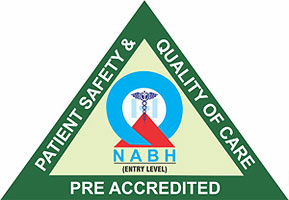+91-7291089674 (Bandra)
+91-7291092120 (Kandivali)




June 3, 2022 | Author: Admin
Intralase is an advanced blade-free procedure for correcting refractive errors. The technique makes use of the Intralase laser to create the flap. It helps in creating a flap of pre-determined diameter and depth.
WHAT IS INTRALASE?
Intralase involves a completely blade-free technology. In a conventional bladed LASIK surgery, the doctor creates the flap with the help of a hand-held device. This device is known as a microkeratome. It is an oscillating razor blade made of metal. Most complications during the LASIK surgery occur during flap creation with a microkeratome. In some cases, the complications are so severe that they may result in reduced vision or loss of vision.
Intralase proves to be beneficial during the first stage of the LASIK procedure. The safety of LASIK surgery is significantly improved with Intralase. The Intralase replaces the hand-held microkeratome with computer-guided LASER for improved accuracy and precision.
WHO IS ELIGIBLE FOR INTRALASE?
Not all patients suffering from refractive errors are eligible for undergoing intralase procedure. Your ophthalmologist will comprehensively examine the eye and determine if you are eligible for this procedure. People who are not eligible for this procedure are:
HOW INTRALASE WORKS?
The Intralase technology works through the following steps:
Step 1: The Intralase technology functions at the initial step of the surgery. During this step, 15,000 pulses per second are fired by the Intralase LASER machine onto the cornea. This light passes into the cornea, and forms a microscopic bubble layer within the cornea.The depth and diameter of the microscopic bubble layer are pre-determined by the ophthalmic surgeon. The LASER is controlled by a computer console for significant accuracy and precision. With Intralase, flap creation takes just 15-20 seconds.
Step 2: The surgeon lifts the flap and puts it away from the eye. Now, laser light is again fired at the corneal bed for a few seconds to reshape the cornea. The surgeon then places the flap in its original position and checks for proper placement. Eye drops are put in your eye and the procedure is over in just 10 minutes.
WHAT ARE THE DISADVANTAGES OF TRADITIONAL(BLADED) LASIK?
WHAT ARE THE ADVANTAGES OF INTRALASE?
IS INTRALASE PAINFUL?
The IntraLase technique is not painful at all. Before performing the procedure, the doctor administers the eye drop to numb the eyes. Some patients may experience mild eye pressure during the surgery which is normal.
WHAT ARE THE SIDE EFFECTS OF INTRALASE?
Intralase is relatively a safer technique. There are very few side effects in some patients. Some of them include:
All these minor side effects are temporary, and they subside in a month or two following the procedure with correct use of eyedrops under the guidance of your eye doctor.